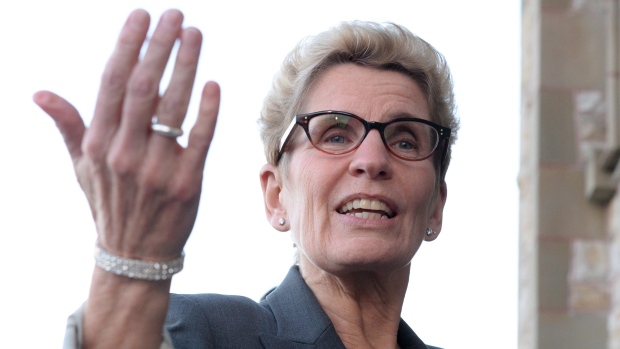Rapidly accelerating home prices in the Greater Toronto Area have in large part been caused by Ontario government policy, one urban planning expert argues.
Real estate prices in Canada’s largest city jumped 16.8 per cent in June, according to data released Wednesday by the Toronto Real Estate Board, with the industry group pointing to supply constraints as the key culprit.
Frank Clayton, senior research fellow at Ryerson University’s Centre for Urban Policy and Land Development, placed the blame squarely on Queen’s Park.
“There is land designated for housing, but it is not serviced, you need to have the sewer, the water, it has to be brought up to the property line, it is not being done and it is deliberate,” Clayton told BNN on Wednesday, noting the number of new single-detached, semi-detached and townhouse units being built in the region has fallen by roughly half over the past decade as demand has soared.
“It is deliberate by the provincial government because they have had, since 2003, an environmental-first agenda which means single detached houses are bad animals,” he said.
“There is an impact to that – the impact is higher house prices.”
Average Toronto home prices have surged more than 85 per cent in the past decade, from $335,907 in 2005 to more than $622,000 in 2015, according to data from TREB. Much of that growth, Clayton said, can be attributed to the Places to Grow Act; Ontario’s most recent land use legislation, which became law in mid-2005.
“Between one quarter and one third of the house price increase over the past ten years since we got the Liberal government in power and the Places to Grow [Act] regional planning scheme was put into place, is due to supply shortages,” Clayton said.
Ontario Housing Minister Chris Ballard’s office directed BNN’s request for comment to Municipal Affairs Minister Bill Mauro, who did not immediately respond.
Last month, federal Finance Minister Bill Morneau launched a new working group – comprised of officials from the governments of Canada, Ontario, British Columbia, Toronto and Vancouver – which is expected to make specific recommendations on how to cool housing prices in Canada’s hottest markets after holding meetings over the summer. However, Clayton argues the supply issue falls under a specific jurisdiction.
“The federal government has no control over the shortage of land,” he said. “It is a provincial initiative.”
The Ontario government recognizes that housing affordability is a “serious concern” in the region, a spokeperson for Ontario Municipal Affairs Minister Bill Mauro said.
“The market and pricing of housing is complex. Cost and affordability are influenced by many factors such as location, proximity to transit and infrastructure and construction costs,” the spokesperson said.
“There is enough land already designated for development to accommodate increasing population in the [Greater Toronto and Hamilton area] for more than 20 years.”











